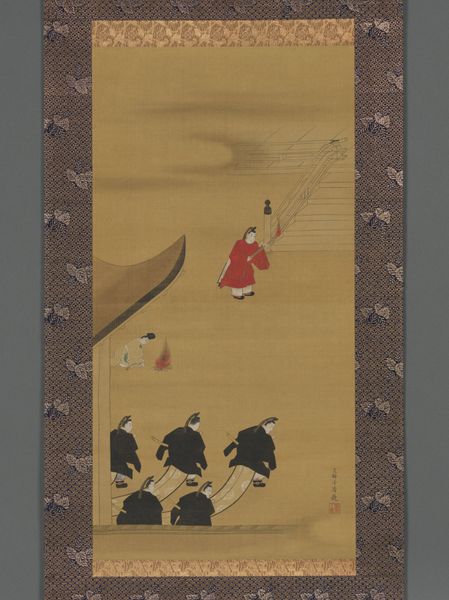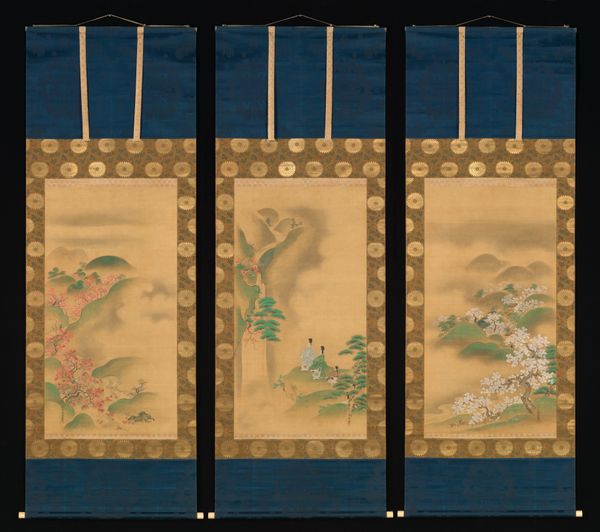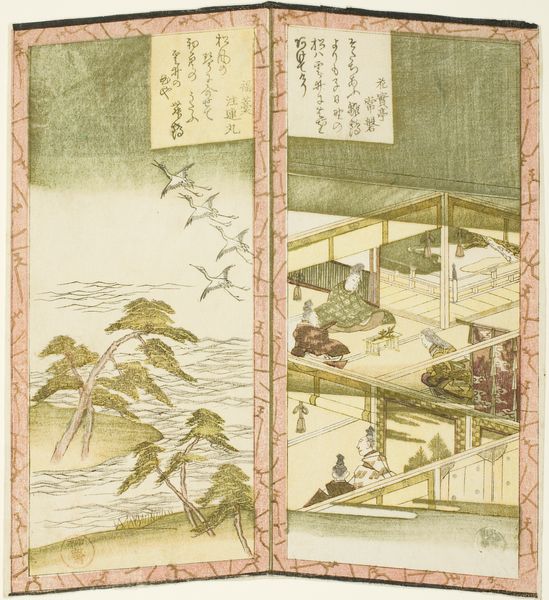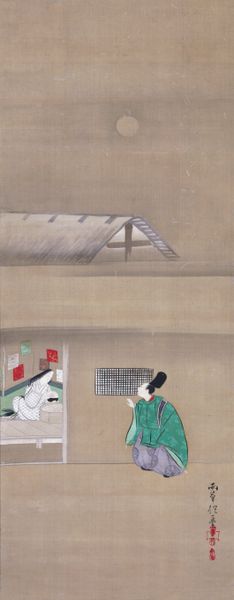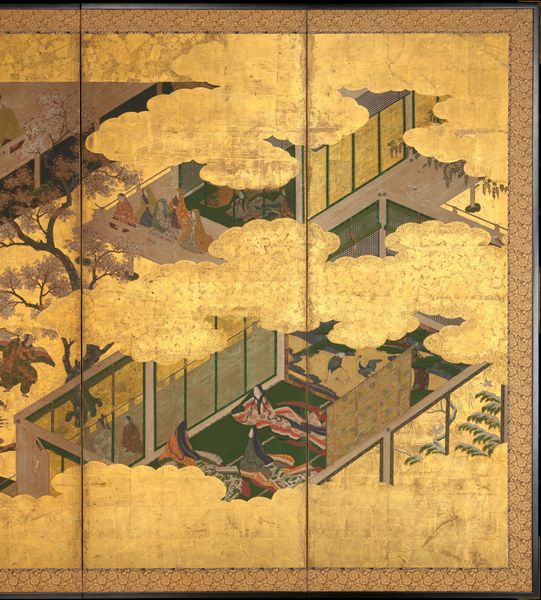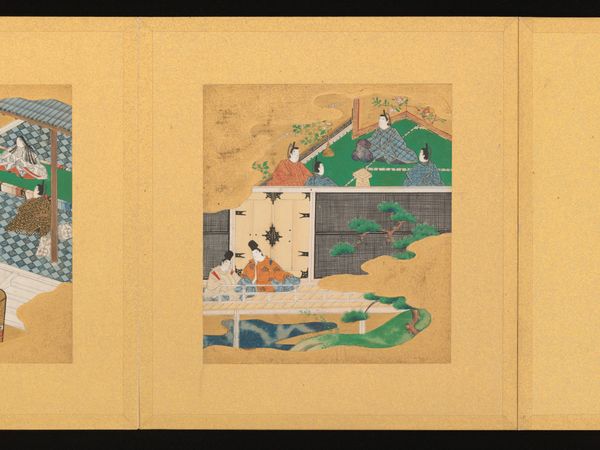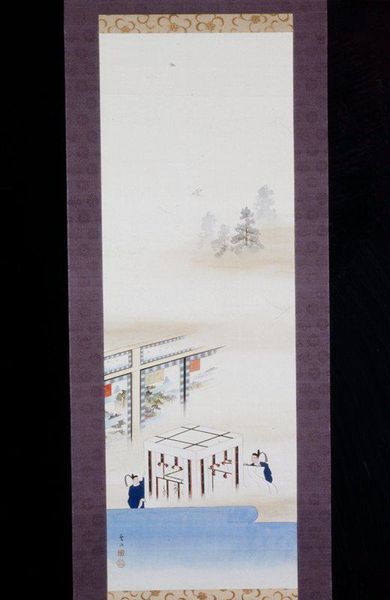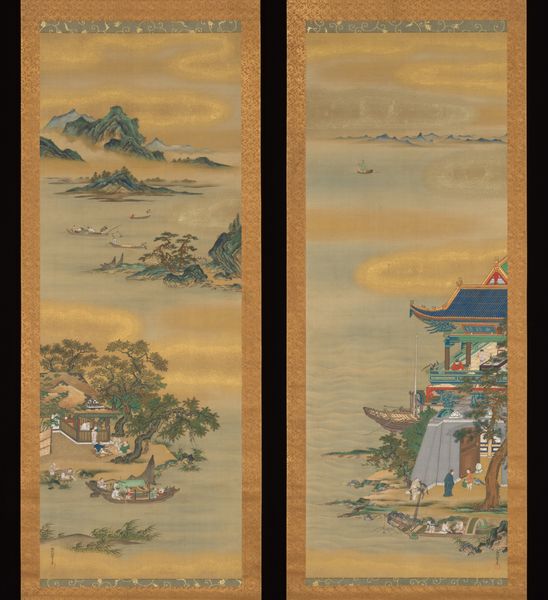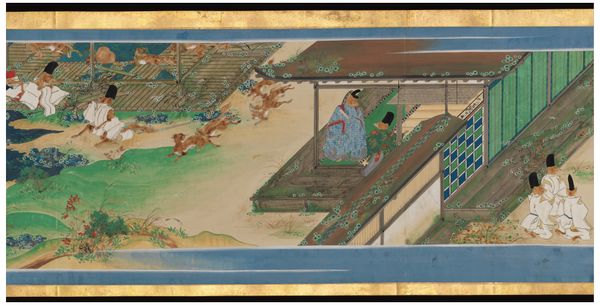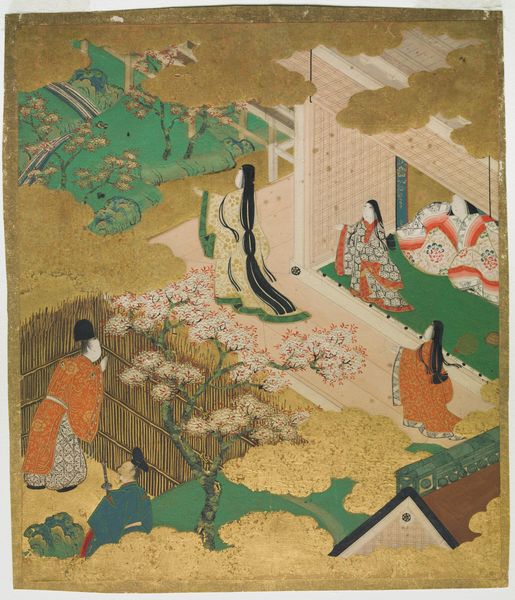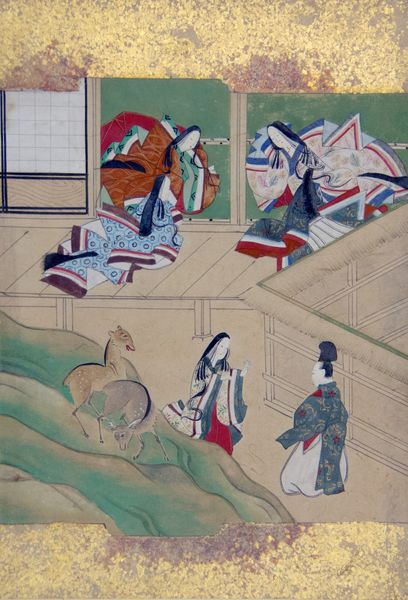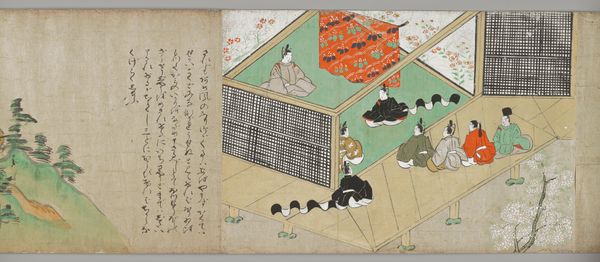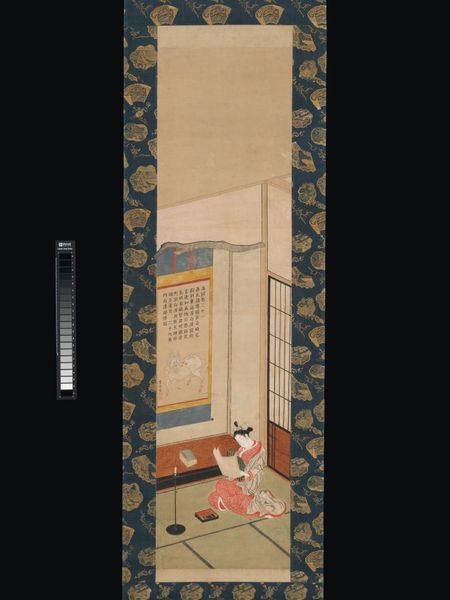
Scenes from The Tale of Genji representing months of the year before 1710
0:00
0:00
Dimensions: 39 7/8 × 81 13/16 in. (101.28 × 207.8 cm) (image)49 9/16 × 127 13/16 × 5/8 in. (125.89 × 324.64 × 1.59 cm) (mount)
Copyright: Public Domain
Curator: Let's focus on this exquisite set of paintings, "Scenes from The Tale of Genji representing months of the year," created before 1710. The artist, Tosa Mitsunari, beautifully renders episodes from this classic Japanese story using tempera and watercolor. What are your initial impressions? Editor: I'm immediately struck by the atmosphere. It feels very serene, but also strangely compartmentalized. Each panel seems to hold a contained narrative, a snippet of courtly life. The muted color palette gives it a sense of aged refinement. Curator: The "Tale of Genji," considered by some to be the world's first novel, offers a rich tapestry of Heian court life. Mitsunari's work highlights the seasonal aspects, intertwining Genji’s story with the passing months and their associated traditions. These screens probably adorned the residence of a high-ranking member of society, serving as both decoration and a subtle display of cultural sophistication. Editor: That’s fascinating, considering the narrative art itself. We're not just seeing landscapes; we’re witnessing coded performances of gender, class, and status. Note how the female figures, often obscured, are central yet marginalized within these scenes, reflecting the constraints and expectations placed upon women in Heian society. The Tale of Genji becomes a stage for analyzing power dynamics. Curator: Absolutely. Moreover, the choice of Yamato-e style – with its emphasis on Japanese subject matter and stylistic conventions – reinforces the cultural identity and historical awareness valued by the aristocracy. The details of clothing, architecture, and garden design speak volumes about the era's aesthetic sensibilities. The museum holds many such artefacts which were later seized by private collectors and sometimes even nation states after imperial dissolution. Editor: Looking at the miniature details within each painting is truly mesmerizing. Each small scene feels symbolic and complete in itself. It is hard not to read the narrative considering it as a history-painting with a pre-constructed canon. Curator: Indeed, Mitsunari encapsulates a specific worldview, emphasizing refinement, tradition, and an idealized vision of court life. It prompts us to consider not just the aesthetic beauty, but also the social function of art during the Edo period. Editor: It’s been insightful exploring "Scenes from the Tale of Genji". It reveals as much about our present understanding as it does about the past social structures. Curator: A testament to the multilayered complexities that a single artwork can hold.
Comments
minneapolisinstituteofart almost 2 years ago
⋮
The time of year is usually specified in The Tale of Genji, and the author takes pains to describe seasonal indicators such as weather and seasonal plants. This screen, once part of a pair, features illustrations and textual passages representing the six months of summer and autumn in order from right to left. The fourth panel from the right, for example, is titled “10th month” and shows an appropriately autumnal scene: 19-year-old Genji and his friend (and sometime rival) Tō no Chūjō dance in a palace garden beneath a maple tree whose crimson leaves fall and scatter. Or, in the Tale’s lyrical description: “Under tall autumn trees [the music] mingled with the wind’s roaring and sighing as it swept gale-like down the mountain, while through the flutter of bright falling leaves [the men’s dancing] shone forth with awesome beauty.”
Join the conversation
Join millions of artists and users on Artera today and experience the ultimate creative platform.
